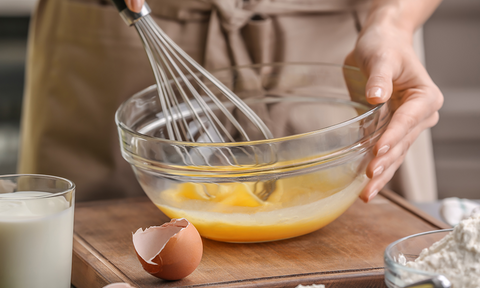HIGH ALTITUDE BAKING TIPS
Baking can feel a bit like magic. You mix a list of ingredients, put it in the oven, and —voila!—you have a cake, a pie, or cookies! How amazing is that? If you have a good recipe and you follow it, deliciousness happens.
LIFE IS HOW YOU BAKE IT.
Still, even the most seasoned bakers have their ups and downs. Baking depends on the specific interactions of several kinds of ingredients: flour, leavening, fats, liquids. Humidity and altitude play a big part. Altitudes differ greatly so the recipe that worked best for your sister in Michigan, could be a flop at your home in Colorado.
BAKING IS SCIENCE OVER SKILL.

High altitude is generally considered 3,500 or more feet above sea level. Air pressure decreases as the altitude increases, air is also drier, which means the batter dries out and rises quickly at higher altitudes. Water boils faster the higher you go and profound changes happen in the oven. Water leaves baked goods more easily—crazy, but evaporation happens in batter, too. All of this leaves the structure of your baked goods weakened and with changes in texture, like coarseness.
What gives? — How about some tips to turn your high altitude baking into better results...
Where There's a Whisk, There's a Way

What does this mean for you bakers flying high? You'll need to make adjustments to your recipes to ensure that your baked goods rise and cook evenly. Here are some general rules to follow to help you achieve more success at higher altitudes:
- Increase oven temperature by 15-25 degrees. Considering evaporation happens faster, help your baked goods set up quicker by raising the temperature. High and dry is the key.
- Decrease baking time by 20-30%. Baked goods are usually done sooner at higher altitudes, especially when we raise the oven temperature. Check progress a few minutes before the minimum baking time. Set that timer!
- Increase flour by 1 Tbsp at 3,500 elevation and by 1 Tbsp for each additional 1,500 feet elevation. Adding flour helps to steady the rise of your baked goods and add structure to them as they grow in the oven. This is especially true for gluten-free flour substitutes and baking mixes. For good high altitude results with our own Lakanto Monkfruit Baking mixes, add 1-2 Tablespoons of almond or coconut flour to the recipe. Flour is your power in high altitude baking.
- When using a sugar substitute, decrease by 1 Tbsp per cup. Since liquids evaporate faster at higher elevations, the concentration of sugar goes up. It's a cakewalk to reduce your sweetener to keep your delectables from collapsing. Our Classic and Golden Monkfruit Sweeteners are a 1:1 replacement for sugars and can be decreased easily.
- Increase liquids by 1-2 Tbsp per 1,000 feet of elevation. It's all about compensating for faster evaporation here—keep things from drying out and getting crumbly before they rise by adding a bit more liquid, whether it's a bit more water, oil, or an extra egg.
- Decrease baking powder and soda by 20% above 3,500 feet and by 50% above 5,000 feet. Reducing the amount of your leavening agents will help your baked goods to rise more gradually, like they would at lower altitudes.
Bake the World a Butter Place

Getting it right baking at high altitudes is a piece of cake! It's mainly a strategy in using the right proportions of ingredients. With practice and experience, trial and error, you high rollers will become more accomplished at baking and make life a little sweeter for everyone around you. Knowing that you're baking up goodness that you can share with others is one of the warmest, fuzziest feelings out there. Knowing you get to eat some is just icing on the cake;)


